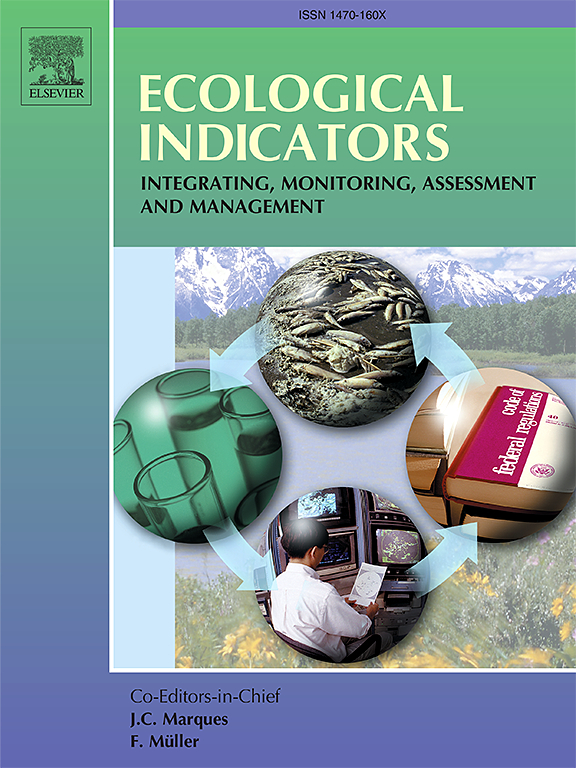绘制2012 - 2018年欧洲森林动态的保护效果和差距
IF 7
2区 环境科学与生态学
Q1 ENVIRONMENTAL SCIENCES
引用次数: 0
摘要
森林管理和养护可以帮助森林适应和尽量减少自然和人为干扰因素对森林死亡率的影响。然而,目前关于不同的管理和养护做法对欧洲森林动态的影响的定量资料很少,同时注重森林范围和健康。在此背景下,本文旨在了解不同土地利用条件下管理和保护措施对森林动态两个关键指标的有效性。我们分析了2012年至2018年欧洲这两个指标的变化,检测了受保护地区与未受保护地区森林动态之间的空间显式平均差异,并检查了多种管理类型的保护区。结果表明,欧洲森林面积增加了1.2个百分点,而冠层密度减少了2个百分点。保护区的平均森林面积增加,但速度比未受保护的环境慢,表明没有保护作用。林冠密度变化可观察到潜在的保护缺口,保护地林冠密度下降0.5 pp,而非保护地林冠密度保持稳定。最后,根据三种聚落类型量化了IUCN管理和保护类别之间的显著差异,并结合典型实例进行了讨论。因此,本文通过对管理和保护森林的有效性进行强有力的、空间明确的监测,将观察到的森林动态总体模式与关于不同管理和保护实践作用的结论联系起来,为欧盟2030年森林战略做出了贡献。本文章由计算机程序翻译,如有差异,请以英文原文为准。
Mapping protection effects and gaps of forest dynamics in Europe 2012 to 2018
Forest management and conservation can help forests adapt to and minimize the effects of natural and anthropogenic disturbance factors on forest mortality. However, little quantitative information is currently available on the impact of different management and conservation practices on forest dynamics in Europe focusing on forest extent and health simultaneously. Against this background, this paper aims to understand the effectiveness of management and protection practices on two key indicators of forest dynamics under different land use conditions. We analyzed changes in both indicators in Europe between 2012 and 2018, detected spatial explicit mean differences between forest dynamics of protected vis á vis unprotected areas, and examined protected areas of multiple management types.
The results show that European forest area increased by 1.2 percentage points pp while canopy density decreased by 2 pp. The average forest area in protected areas increased, but at a slower rate than in their unprotected surroundings indicating no protection effects., In contrast, potential protection gaps can be observed for canopy density changes as density dropped in protected areas by 0.5 pp while it remained stable in unprotected areas. Finally, significant differences between IUCN management and protection categories are quantified against three settlement types and discussed along characteristic examples. In doing so, this paper contributes to the EU Forest Strategy 2030 by providing a robust and spatially explicit monitoring of the effectiveness of managed and protected forests linking observed overall patterns of forest dynamics to conclusions on the role of different management and protection practices.
求助全文
通过发布文献求助,成功后即可免费获取论文全文。
去求助
来源期刊

Ecological Indicators
环境科学-环境科学
CiteScore
11.80
自引率
8.70%
发文量
1163
审稿时长
78 days
期刊介绍:
The ultimate aim of Ecological Indicators is to integrate the monitoring and assessment of ecological and environmental indicators with management practices. The journal provides a forum for the discussion of the applied scientific development and review of traditional indicator approaches as well as for theoretical, modelling and quantitative applications such as index development. Research into the following areas will be published.
• All aspects of ecological and environmental indicators and indices.
• New indicators, and new approaches and methods for indicator development, testing and use.
• Development and modelling of indices, e.g. application of indicator suites across multiple scales and resources.
• Analysis and research of resource, system- and scale-specific indicators.
• Methods for integration of social and other valuation metrics for the production of scientifically rigorous and politically-relevant assessments using indicator-based monitoring and assessment programs.
• How research indicators can be transformed into direct application for management purposes.
• Broader assessment objectives and methods, e.g. biodiversity, biological integrity, and sustainability, through the use of indicators.
• Resource-specific indicators such as landscape, agroecosystems, forests, wetlands, etc.
 求助内容:
求助内容: 应助结果提醒方式:
应助结果提醒方式:


